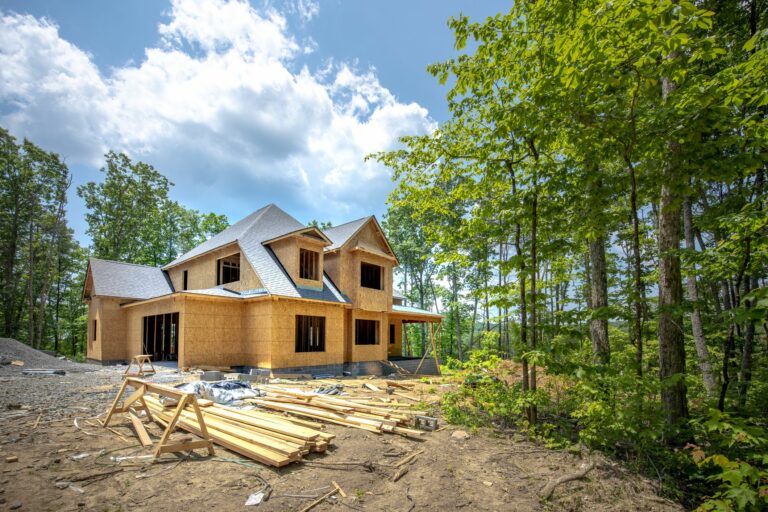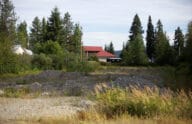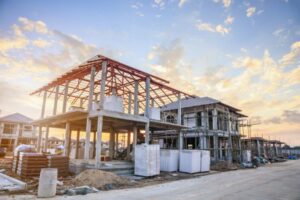The federal government should get out of the way of homebuilding

The federal government isn’t going to solve the housing crisis. With its multiple large, redundant, contradictory, unwieldy, and economically illiterate Washington-centric bureaucracies, we should neither expect nor want the government to be in the homebuilding business. Or to tell us how to do it.
In fact, the best thing the government can do for housing is to get out of the way. For as long as federal agencies have affected homebuilding, they have both skewed and inhibited the construction of new homes, especially for the working-class and minorities.
The government’s early housing mistakes
For starters, consider the federal government’s subsidization of the suburbs in the mid-20th century. As Richard Rothstein points out in The Color of the Law, the feds demanded that subsidized suburbs be filled only with white residents. To get federal financing, developers had to agree to restrict their housing to white residents only. Deed restrictions against selling to minority buyers abounded. The federal government rationalized the discrimination on the grounds that property values (and therefore loan collateral) would tank if a neighborhood changed its racial composition.
These policies relegated minority populations to the inner cities, where more and more people chased fewer, older, and deteriorating houses. In other words, inner-city populations ended up paying more for less, losing the opportunity for intergenerational wealth accumulation and transfer compared to white suburban homeowners.
Meanwhile, in cities, the Housing Act of 1949 funded disastrous public housing experiments that had long-term effects on urban neighborhoods
In St. Louis, for example, federal money paid for the infamous Pruitt-Igoe project, a utopian development that became obsolete as soon as it was built. With no money left over for adequate maintenance and repair, the project soon turned from a gleaming example of federal largesse to a nightmare of poverty, crime, and despair. In 1976, a mere 22 years after they were built, the last of the 33 multistory buildings were intentionally demolished in clouds of dynamite and dust.
Once housing 10,000 residents, the site is now mostly weeds, trees, and trash.
Critical habitats and endangered species: How the government keeps land undeveloped
In more recent times, the federal government’s biggest contribution to housing policy has been its relentless efforts to tie up undeveloped land in a complex web of environmental restrictions, where one wrong step can lead to millions of dollars in fines and time in federal prison.
In some areas of the country, the federal government convinces local governments to adopt habitat conservation plans that render rural and semi-rural private land largely undevelopable, meaning homes will never be built there.
This leaves some landowners with very few options for making use of their own property. Moreover, the federal habitat priorities and regulations guiding these landowners are often counterproductive, and encourage these landowners to manage their land in ways that lead to negative conservation outcomes.
Even when homeowners can build, they might run afoul of a host of strict environmental restrictions with draconian consequences.
Take the case of Tuang Ming-Lin, who in 1994 was threatened with fines of $300,000 and a year in jail for allegedly plowing over an endangered rat on his 720-acre farm near Bakersfield, California. To put icing on the cake, when his case became a cause célèbre for farmers chafing under federal ESA rules, the INS raided his offices looking for alleged immigration violations.
A builder doesn’t even need to encounter an animal to find himself mired in red tape: The Endangered Species Act gives activist groups an effective legal tool for stopping a development in its tracks. As long as groups can allege some harm to the habitat of an endangered species, they can delay homebuilding projects for years, if not forever. Every time the Fish & Wildlife Service lists a new species for protection, it can have serious consequences for homebuilding. For example, when the service proposed the listing of the “Long-Eared Bat” in March 2022, the National Association of Homebuilders remarked that the listing “could have an outsized impact upon the U.S. residential construction sector’s ability to provide desperately needed building lots.”
Multiply that effect by over 1300 species listed by the EPA, and the impact on housing is dramatic.
The federal government has even tried to stymie private land use for species that aren’t even on the land. When Edward Poitevent’s land was designated as a critical habitat for the Dusky Gopher Frog, Pacific Legal Foundation went to the Supreme Court on his behalf. Not only was the closest living frog many miles away in another state, we argued, but it also couldn’t survive on Poitevent’s land even if it were carried there by the truckload.
Fortunately, the Court agreed with us in Edward’s case. But there are still millions of acres of land that have been designated as critical habitats for other species—and the landowners, farmers, and homebuilders there face virtually insurmountable obstacles to using their land.
The Clean Water Act’s ‘regulatory hydra’
Some of the worst recent abuses of federal environmental enforcement have been with wetlands.
Take the case of former PLF clients Ocie and Carey Mills.
In the late 1980s, when the father-and-son team brought in clean sand to finish out a lot in order to build a small home for Carey, the Army Corps of Engineers swooped in and told them to stop. They did, but when Florida officials confirmed that they weren’t touching any wetlands, they resumed.
The next time the feds came calling, it was to arrest and file criminal charges against the Millses. After spending 18 months in a federal prison, Ocie and Carey were ordered to “restore” the wetlands. They attempted to do so but were told they had to do more or they would go back to prison. By this time, however, the Millses had lawyered up. They convinced a federal judge to visit the homesite.
The judge did—and he concluded that there hadn’t been any wetlands on the Millses’ site to begin with.
As the judge put it, “In a reversal in terms that is worthy of Alice in Wonderland, the regulatory hydra which emerged from the Clean Water Act mandates in this case that a landowner who places clean fill dirt on a plot of subdivided dry land may be imprisoned for the statutory felony offense of ‘discharging pollutants into the navigable waters of the United States.’”
But the Millses’ story is hardly an isolated case from the bad old days.
As recently as 2017, John Duarte, another PLF client, was forced to pay $1.1 million in fines for allegedly plowing vernal pool wetlands—an isolated wetland on land that had been farmed for decades. The Army Corps of Engineers went so far as to call the mounds and furrows from the ordinary plowing “small mountain ranges” of dredged and filled material.
It was highly doubtful that the feds had jurisdiction over this wetland, because it lacked any meaningful connection to a navigable waterway. But faced with the loss of his business and his employees’ loss of their jobs, Duarte was forced to capitulate and pay over $1 million in fines to get the feds off his case.
In 2006, PLF client John Rapanos successfully defended himself against the EPA’s criminal prosecution. Rapanos allegedly had filled 22 acres of wetland (that was, once again, nowhere near any navigable waterway). But in Rapanos’ case, the Supreme Court failed to settle on a single definition of wetlands that could be used by future farmers and developers.
As Justice Anthony Kennedy once remarked during an oral argument a few years later, the definition of a wetland seems to be “unconstitutionally vague.” Justice Samuel Alito wrote it was “notoriously unclear” and “hopelessly indeterminate.”
So how is a farmer or homebuilder supposed to proceed with such uncertainty? Sadly, many have learned that it is best not to proceed. It is best not to poke the federal dragon by trying to build homes on any land that has the remotest chance of being called a wetland subject to federal control. If you think there are wetlands on your property, your best-case scenario is getting a federal permit, which, according to 2006 estimates, costs $270,000 and takes 788 days to obtain. If you’re not sure whether there are wetlands on your land and decide not to get a permit, a wrong guess could saddle you with huge fines and jail time.
That’s what happened to Mike and Chantell Sackett, whose case will go (back) to the Supreme Court in October.
Mike and Chantell first ran into trouble when they began preparing their small lot for a modest single-family home. That’s when the EPA came down on them, claiming they had filled a wetland and would be subject to thousands in daily fines for their work.
When PLF first took the Sacketts’ case to the Supreme Court in 2012, the couple won the right to challenge the EPA’s determination that there were wetlands on their property. This fall we’re taking the case back to the Supreme Court to persuade the Court to finally give America a meaningful definition of wetlands that isn’t “unconstitutionally vague” or “notoriously unclear.”
In other words, we’re asking for something that farmers and homeowners can rely on when using their land.
It shouldn’t take over a decade, two trips to the Supreme Court, and the prospect of millions of dollars in fines to build a single-family home in Idaho. If this is the risk of building one home, imagine the hurdles faced by developers of subdivisions.
Homebuilders shouldn’t be held hostage to the federal government’s desire to set aside millions of acres of private property for environmental purposes without compensating the landowners and without answering the question of where the homes that cannot be built will be built.
To solve the nation’s housing crisis, we need more homes. The federal government is not the entity that should build these homes, but it should at least get out of the way of those who wish to risk land and capital to make homebuilding a reality.








